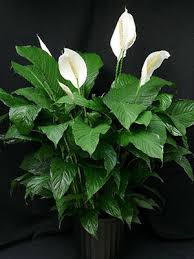Indoor plant pets not only add ambience to a room by bringing the outside, inside, but plants also improve indoor air quality.
Plants Talk Back
So you may have heard it said that you should talk to your plants. The jury is out on the benefits of talking to your plants but believe it or not, your plants do talk back to you. Droopy leaves can be your plant’s way of letting you know that it may be getting too little water. Note however, that leaves can also droop from too much water due to roots lacking oxygen and ‘drowning’, so before you kill your plants with kindness, always check the soil moisture level prior to watering a plant. This can be done with a soil probe, or feeling what the soil texture is like in the top 2 inches. Ideally, the soil should not feel excessively dry (like dust) nor should it feel excessively wet or soggy, but it should feel moist. Do not water a plant if the top 2 inches of the soil feels moist. Soil moisture level can also be gauged by picking up the plant and pot; a heavier plant+pot usually indicates higher soil moisture and the opposite is true if the plant+pot feels lighter. If the soil moisture level is low, water slowly until the entire root ball has absorbed enough water.
 If a plant’s leaves are yellow (chlorotic) when their normal color should be green (or burgundy in some cases), the plant could be letting you know that it is nutrient deficient. It may need some supplemental elements such as nitrogen or iron. Note that old leaves will turn yellow prior to shedding – also known as senescence; leaves will also turn yellow prematurely if the plant is diseased. It is therefore important to differentiate whether yellowing leaves are due to senescence, a nutrient deficiency, or a disease.
If a plant’s leaves are yellow (chlorotic) when their normal color should be green (or burgundy in some cases), the plant could be letting you know that it is nutrient deficient. It may need some supplemental elements such as nitrogen or iron. Note that old leaves will turn yellow prior to shedding – also known as senescence; leaves will also turn yellow prematurely if the plant is diseased. It is therefore important to differentiate whether yellowing leaves are due to senescence, a nutrient deficiency, or a disease.
Let There Be Light!

Light is the only way a plant has access to food. Plants are unique among living organisms in that they synthesize their own food using light as an energy source. Via the complex and quite fascinating process of photosynthesis, plants use light energy to split water and carbon dioxide molecules to produce carbohydrates. As important as light is to plants however, most indoor plants will not tolerate full sun, so pay close attention to your plants’ light requirements. Flowering plants such as the Peace Lily and Anthurium will require higher light levels than foliage plants such as the ZZ plant or Sansevieria
For more information on caring for your plant pets, click here
 0
0

